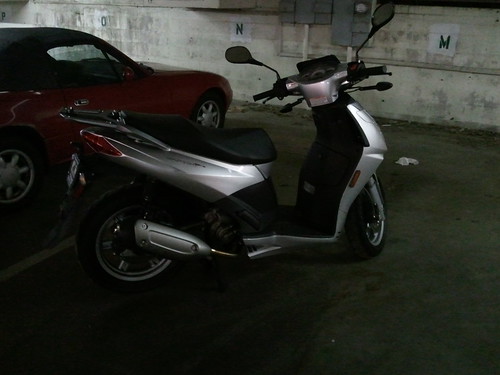I mentioned
in a few recent posts that grids are pretty much the ideal network design for any mode of transport, assuming high frequencies. (Low-frequency transit networks, from local bus to airline, can often work best in a hub-and-spoke design, but that's a post for another day.) I'd like to mention a related concept now: permeability. Permeability is a measure of how easily one can move through a city. If you can move easily through an area, without a lot of twists and turns, that area is permeable. Most importantly for those of us trying to create a better city, permeability can be different for different modes.
View Larger Map
Take a look at this slice of Riverside, for example. This is Central and Chicago Avenues, in Canyon Crest. If you are in a car heading down Central and you want to continue west towards Riverside Plaza, you need to turn south on Chicago, drive up the hill to Alessandro/Central/Arlington/Chicago*, and turn west again. If you're walking or on a bike, however, you can use one of my favourite bits of cycle infrastructure in the city- a class I bike path that snakes up into the hills, roughly continuing the line of Central Ave. to Fairview, which takes you through to Central on the other side. (You'll have to zoom in on the above map to see it.)
This particular bit of city is more permeable to cyclists and walkers than it is to drivers- and that's a good thing. It means its a bit easier for a cyclist to get around this neighbourhood than it is for a driver to do the same, which should lead more people to cycle or walk. This is also the central insight behind
bicycle boulevards, which allow through cycling but block through motor vehicles.
Of course, facilities out here in the 'burbs can also be designed with improved permeability for motorists, at the expense of other modes. Coming back to Canyon Crest, the Towne Centre shopping centre provides an excellent pedestrian experience- once you're inside. On the outside, there are only three dedicated pedestrian entrances, compared to 7 car entrances- and all pedestrian entrances simply dump you out into the parking lot, often on the hood of a parked car. Even though the Towne Centre is in a relatively walkable area, it is significantly more permeable to auto (and, to some extent, bicycle) traffic than pedestrians.
Making our cities more permeable to pedestrian traffic is not terribly difficult, but it requires thinking about mobility in different ways. There is, for example, no reason for a development to wall itself off entirely from the arterial road it sits on. Adding pedestrian paths (or, for the paranoid, gates) at the end of culs-de-sac would allow residents to choose to walk, rather than being discouraged by a roundabout process for exiting their subdivision. Perhaps some roads could receive a bicycle boulevard-style treatment, becoming closed to through car traffic. (Best of all, those sorts of changes are often clamored for by folks looking to calm neighbourhood traffic.) Small- and cheap!- changes in road design could easily make active transportation the obvious choice for a huge proportion of trips, without disturbing the flow of arterial traffic.



